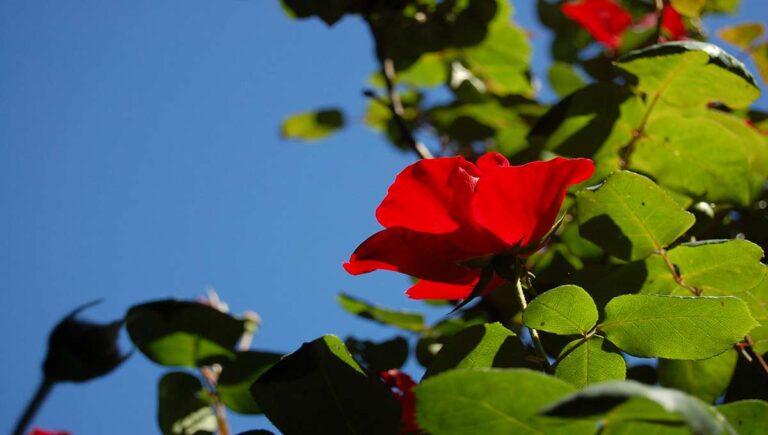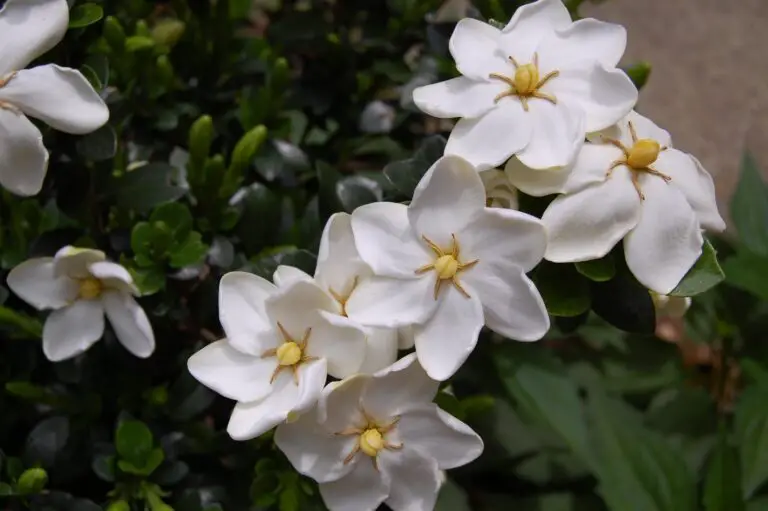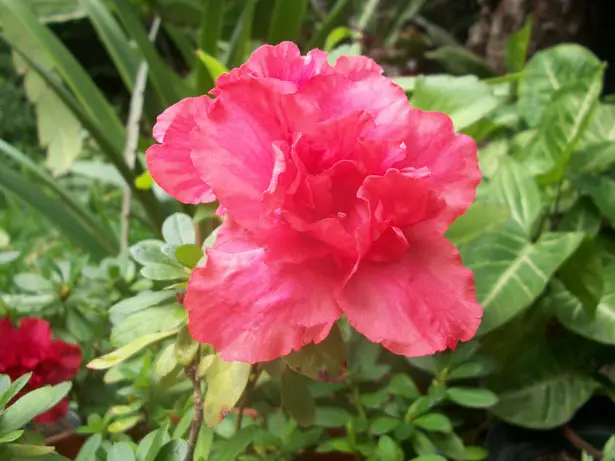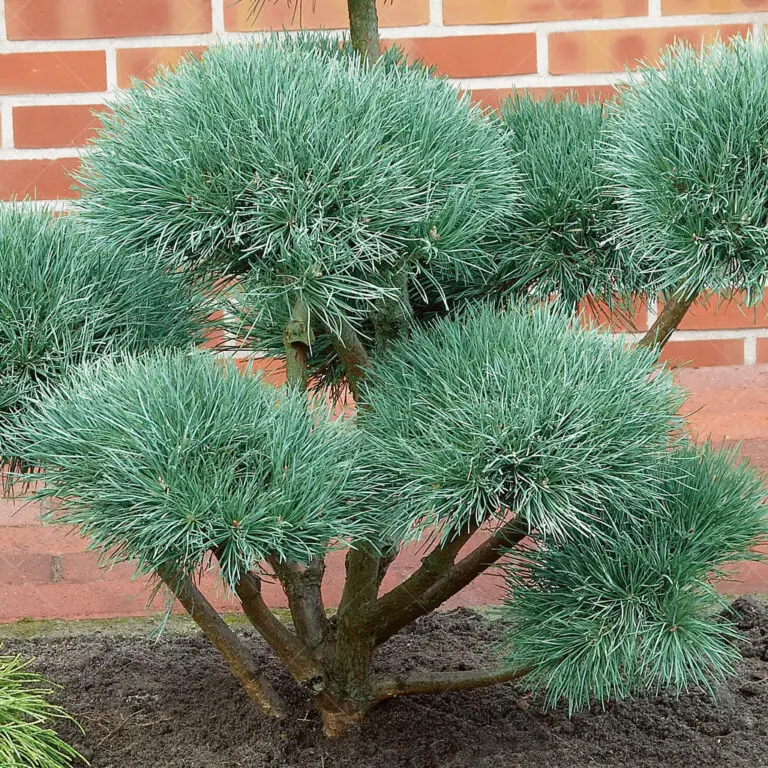Introduction
Welcome to our guide on Sedum plants! If you’re new to gardening or just looking to add some charm to your outdoor space, the Sedum plant is a fantastic choice. Known for their hardiness and unique beauty, Sedum plants are a favorite among garden enthusiasts.
Sedum plants are easy to care for, making them perfect for beginners. They come in a variety of shapes and colors, adding visual interest to any garden. Whether you want a plant that thrives in the sun or one that can handle a bit of neglect, Sedums are versatile enough to fit the bill.
In this guide, we’ll cover everything you need to know about Sedum plants. We’ll start with the basics: what they are and where they come from. Then, we’ll dive into the details of Sedum plant care, giving you tips on how to keep your plant healthy and vibrant.
You’ll also learn about growing Sedum plants. We’ll provide a step-by-step guide to help you get started, whether you’re planting them in your garden or in pots indoors. Plus, we’ll explore the many uses and benefits of Sedum plants. From adding beauty to your landscape to providing environmental benefits, these plants have a lot to offer.
Finally, we’ll introduce you to some of the popular varieties of Sedum plants. Each variety has its own unique features, and we’ll help you choose the best ones for your garden.
By the end of this guide, you’ll be well-equipped to grow and care for your own Sedum plants. So, let’s get started and discover the wonderful world of Sedum plants together!

What is a Sedum Plant?
Sedum plants, also known as stonecrops, are a type of succulent that belong to the Crassulaceae family. These plants are known for their thick, fleshy leaves that store water, making them exceptionally drought-tolerant. This means they can thrive in dry conditions where many other plants might struggle.
Historical Context and Origins
Sedum plants have a rich history. They are native to a variety of regions, including parts of North America, Europe, and Asia. Their ability to grow in rocky, shallow soil gave them the name “stonecrop.” Over time, these hardy plants have found their way into gardens all over the world.
Basic Characteristics and Appearance
Sedums come in many shapes and sizes, ranging from low-growing ground covers to upright varieties that can reach up to a foot tall. The leaves can be round, oval, or even spiky, and they often have a waxy coating that helps prevent water loss. Depending on the variety, Sedum leaves can be green, blue, red, or even purple.
One of the most appealing features of Sedum plants is their flowers. During the blooming season, Sedums produce clusters of small, star-shaped flowers that can be white, yellow, pink, or red. These flowers not only add a splash of color to your garden but also attract pollinators like bees and butterflies.
Different Names and Common Nicknames
Sedum plants are known by many names. The most common name, “stonecrop,” refers to their natural habitat among rocks and stones. Some varieties have their own specific nicknames. For example, Sedum acre is often called “Goldmoss” because of its bright yellow flowers and moss-like appearance. Sedum morganianum is famously known as “Burro’s Tail” due to its trailing stems that resemble a donkey’s tail.
Whether you call them Sedums, stonecrops, or by their specific variety names, these plants are loved for their resilience, low maintenance needs, and beauty. In the next section, we’ll delve into how to care for these wonderful plants to keep them thriving in your garden.
Sedum Plant Care
Taking care of Sedum plants is easy and rewarding. These hardy succulents don’t need much attention, making them perfect for both beginner gardeners and those with a busy lifestyle. Here’s everything you need to know to keep your Sedum plants happy and healthy.
Soil Requirements
Sedum plants thrive in well-draining soil. They don’t like to sit in water, so it’s important to use soil that lets water flow through easily. You can use a cactus or succulent mix, or make your own by mixing regular potting soil with sand or perlite.
Watering Schedule and Techniques
One of the best things about Sedum plants is that they don’t need much water. Water your Sedum plant when the soil is completely dry. Overwatering can cause the roots to rot, so it’s better to underwater than to overwater. In general, watering once every two weeks is a good rule of thumb, but this can vary depending on your local climate and the season.
Light and Temperature Preferences
Sedum plants love sunlight. Place them in a spot where they can get at least six hours of direct sunlight each day. If you’re growing Sedum indoors, a sunny windowsill is perfect. These plants also do well in warm temperatures. They can handle the heat of summer but might need some protection from the intense midday sun in very hot climates.
Fertilization and Feeding
Sedums aren’t heavy feeders. A light feeding once or twice a year is usually enough. You can use a balanced, all-purpose fertilizer diluted to half strength. Apply it in the spring when the plant starts growing again and possibly once more in the summer.
Common Pests and Diseases
Sedums are generally pest-free, but sometimes aphids, mealybugs, or spider mites can appear. If you notice these pests, you can treat your plant with insecticidal soap or a neem oil solution. As for diseases, the most common issue is root rot, which happens if the plant is overwatered. Make sure your Sedum is in well-draining soil and that the pot has drainage holes to prevent this.
Seasonal Care Tips
Sedums can tolerate a variety of weather conditions, but they still need some seasonal care:
- Spring and Summer: This is the growing season for Sedums. Water them more frequently, and consider a light feeding of fertilizer.
- Fall: As the weather cools, reduce watering. Sedums are preparing for dormancy, so they don’t need as much water.
- Winter: Most Sedums go dormant in the winter. Water very sparingly, only when the soil is completely dry. If you live in a cold climate, outdoor Sedums can handle frost, but you might want to mulch around the plants for extra protection.
By following these simple care guidelines, your Sedum plants will thrive and bring beauty to your garden or home. In the next section, we’ll discuss how to grow Sedums, from planting to propagation.

Sedum Plant Growing Guide
Growing Sedum plants is simple and enjoyable. Whether you’re planting them in your garden or keeping them in pots, these succulents are quite forgiving. Here’s a step-by-step guide to help you successfully grow your Sedum plants.
Choosing the Right Variety
Before you start planting, it’s important to choose the right variety of Sedum. There are many types, from low-growing ground covers to taller, upright varieties. Consider your space and what you want to achieve with your Sedum plants. For example, if you want a colorful ground cover, Sedum acre or Sedum spurium might be perfect. For container gardening, consider Sedum morganianum (Burro’s Tail) with its trailing stems.
Planting Process
- Prepare the Soil: Sedum plants need well-draining soil. If you’re planting in the ground, mix some sand or perlite into your garden soil to improve drainage. For pots, use a cactus or succulent mix.
- Choose the Right Spot: Pick a location that gets plenty of sunlight. Sedums thrive in full sun, needing at least six hours of direct sunlight each day.
- Planting: Dig a hole that’s slightly larger than the root ball of your Sedum plant. Place the plant in the hole and fill it with soil, pressing gently to eliminate air pockets. Water the plant lightly to help it settle in.
Propagation Methods
Sedums are easy to propagate, so you can grow new plants from the ones you already have. Here are a few methods:
Cuttings
- Take a Cutting: Use a clean, sharp knife or scissors to cut a healthy stem from the parent plant.
- Let It Callus: Allow the cutting to sit in a dry, shaded spot for a few days until the cut end forms a callus.
- Plant the Cutting: Once the end is calloused, plant the cutting in well-draining soil. Water lightly and keep it in a bright spot.
Division
- Dig Up the Plant: Carefully dig up the Sedum plant you want to divide.
- Separate the Roots: Gently separate the plant into smaller sections, making sure each section has roots attached.
- Replant: Plant each section in a new spot or pot with well-draining soil. Water lightly.
Seeds
- Sow the Seeds: Scatter Sedum seeds on the surface of a tray filled with well-draining soil. Press them lightly into the soil, but don’t cover them completely.
- Water and Light: Mist the soil to keep it moist and place the tray in a bright, warm spot. Keep the soil moist until the seeds germinate.
- Transplant: Once the seedlings are large enough to handle, transplant them into individual pots or directly into the garden.
Tips for Indoor and Outdoor Growing
- Indoor Growing: Place your Sedum plants near a sunny window where they can get plenty of light. Use a pot with drainage holes to prevent water from sitting in the soil.
- Outdoor Growing: Choose a sunny spot in your garden. Sedums are great for rock gardens, borders, or as ground covers. Make sure the soil drains well to avoid root rot.
Troubleshooting Common Growing Problems
- Yellowing Leaves: This can be a sign of overwatering. Let the soil dry out completely before watering again.
- Leggy Growth: If your Sedum plant is growing tall and spindly, it might not be getting enough light. Move it to a sunnier spot.
- Dropping Leaves: This can happen if the plant is stressed from too much or too little water. Check your watering routine and adjust as needed.
By following these steps, you’ll find that growing Sedum plants is both easy and satisfying. In the next section, we’ll explore the various uses and benefits of Sedum plants, from landscaping to environmental advantages.
Uses and Benefits of Sedum Plants
Sedum plants are more than just pretty additions to your garden. They offer a variety of uses and benefits that make them a great choice for any gardener. From enhancing your landscape to providing environmental advantages, Sedum plants are incredibly versatile.
Landscaping Uses
Sedum plants are a favorite in landscaping for several reasons:
- Ground Cover: Low-growing Sedums, like Sedum acre or Sedum spurium, make excellent ground covers. They spread quickly, creating a carpet of color and texture that suppresses weeds and reduces soil erosion.
- Rock Gardens: Sedums thrive in the rocky, well-drained conditions of rock gardens. Their vibrant foliage and flowers add visual interest and contrast to the stones.
- Borders and Edges: Taller varieties, such as Sedum spectabile, are perfect for borders and edges. They provide structure and color, especially in late summer and fall when many other plants have finished blooming.
- Containers and Hanging Baskets: Sedums like Sedum morganianum (Burro’s Tail) are ideal for containers and hanging baskets. Their trailing stems create a cascading effect that’s visually stunning.
Environmental Benefits
Sedum plants are not just beautiful; they are also environmentally friendly:
- Erosion Control: Sedums have strong root systems that help hold soil in place, making them effective at preventing erosion on slopes and hillsides.
- Drought Resistance: These succulents are highly drought-resistant, meaning they require less water than many other plants. This makes them a great choice for xeriscaping and water-wise gardening.
- Air Quality: Like all plants, Sedums help improve air quality by absorbing carbon dioxide and releasing oxygen.
Health and Medicinal Uses
While not commonly known for their medicinal properties, some Sedum varieties have been used in traditional medicine:
- Skin Treatments: Some types of Sedum have been used to treat skin conditions. For instance, Sedum telephium, also known as orpine, has been used in folk medicine to treat wounds and burns.
- Anti-inflammatory Properties: Certain Sedum species are believed to have anti-inflammatory properties, though scientific studies are limited.
Benefits for Pollinators and Wildlife
Sedum plants attract a variety of beneficial insects and wildlife:
- Pollinators: The bright, star-shaped flowers of Sedum plants attract bees, butterflies, and other pollinators, helping to support local ecosystems.
- Habitat: Sedums can provide shelter and food for small insects and animals, contributing to biodiversity in your garden.
Additional Benefits
- Low Maintenance: Sedums are easy to care for, requiring minimal watering and attention. This makes them perfect for busy gardeners or those new to gardening.
- Year-Round Interest: With their variety of shapes, colors, and blooming seasons, Sedums provide visual interest throughout the year. Even in winter, their foliage and seed heads add texture to the garden.
By incorporating Sedum plants into your garden, you not only enhance its beauty but also contribute to a healthier environment. In the next section, we’ll look at some of the most popular varieties of Sedum plants and what makes each one special.
Popular Varieties of Sedum Plant
Sedum plants come in a wide range of varieties, each with its own unique characteristics and beauty. Here are some of the most popular varieties of Sedum plants that you can consider adding to your garden.
Sedum acre (Goldmoss Sedum)

Sedum acre, commonly known as Goldmoss Sedum, is a low-growing, mat-forming succulent. It has tiny, bright green leaves that turn golden-yellow in the summer. This variety is perfect for ground cover, rock gardens, and filling in gaps between stepping stones.
- Height: 3-4 inches
- Flower Color: Yellow
- Bloom Time: Late spring to early summer
- Special Features: Drought-tolerant and easy to grow
Sedum spurium (Dragon’s Blood Sedum)

Sedum spurium, or Dragon’s Blood Sedum, is known for its striking foliage and flowers. The leaves are green in summer but turn a deep red in fall, creating a beautiful contrast. This variety spreads quickly, making it ideal for ground cover.
- Height: 4-6 inches
- Flower Color: Pink to red
- Bloom Time: Mid to late summer
- Special Features: Excellent ground cover and attracts butterflies
Sedum spectabile (Showy Stonecrop)

Sedum spectabile, also known as Showy Stonecrop, is a taller variety that produces large, flat clusters of flowers. The succulent leaves are a lovely blue-green color. This Sedum is perfect for borders and adding height to your garden.
- Height: 18-24 inches
- Flower Color: Pink, red, or white
- Bloom Time: Late summer to fall
- Special Features: Attracts pollinators and adds late-season color
Sedum morganianum (Burro’s Tail)

Sedum morganianum, commonly called Burro’s Tail, is a unique trailing succulent that looks stunning in hanging baskets and containers. The thick, fleshy leaves grow in long, trailing stems, creating a cascade of green.
- Height: Trails up to 2 feet
- Flower Color: Pink to red
- Bloom Time: Late spring to early summer
- Special Features: Perfect for hanging baskets and indoor growing
Sedum reflexum (Blue Spruce Sedum)

Sedum reflexum, or Blue Spruce Sedum, gets its name from its blue-green, needle-like leaves that resemble a spruce tree. This hardy succulent forms dense mats and is great for rock gardens and borders.
- Height: 6-8 inches
- Flower Color: Yellow
- Bloom Time: Early to mid-summer
- Special Features: Evergreen foliage and excellent for erosion control
Choosing the Right Sedum for Your Garden
When selecting a Sedum variety for your garden, consider the following:
- Purpose: Are you looking for ground cover, a border plant, or something for a container? Different varieties serve different purposes.
- Climate: Most Sedums are hardy, but some varieties are better suited to certain climates. Check the hardiness zone for each variety to ensure it will thrive in your area.
- Sunlight: All Sedums prefer full sun, but some can tolerate partial shade. Choose a variety that matches the light conditions in your garden.
By choosing the right variety of Sedum, you can add a touch of beauty and resilience to your garden. In the next section, we’ll wrap up with a recap of the key points and some final thoughts on the wonderful world of Sedum plants.
Conclusion
We hope this guide has given you a clear understanding of Sedum plants and how to grow and care for them. These versatile and hardy succulents are perfect for any gardener, whether you’re just starting out or have years of experience. Let’s recap the key points we’ve covered:
- Sedum plants are drought-tolerant succulents that come in many shapes, sizes, and colors.
- They require well-draining soil, plenty of sunlight, and minimal watering.
- Sedum plants are easy to grow and propagate, making them ideal for busy gardeners.
- These plants offer a variety of landscaping uses, from ground cover to container gardening.
- Sedum plants provide environmental benefits, such as erosion control and attracting pollinators.
- Popular varieties include Goldmoss Sedum, Dragon’s Blood Sedum, Showy Stonecrop, Burro’s Tail, and Blue Spruce Sedum.
By incorporating Sedum plants into your garden, you’ll enjoy their beauty and resilience year-round. They’re a fantastic addition to any landscape, offering both aesthetic and practical benefits.
Comprehensive Guide to the Chinese Emperor Jasmine Plant
FAQs
Here are some common questions about Sedum plants and their care:
How often should I water my Sedum plant?
Water your Sedum plant when the soil is completely dry. Generally, watering once every two weeks is sufficient, but this can vary depending on your local climate and the season. During hot summer months, you might need to water more frequently, while in the winter, you can reduce watering.
Can Sedum plants survive winter?
Most Sedum varieties are hardy and can survive winter. They go dormant during the colder months, which means they need even less water. If you live in an area with harsh winters, you might want to add a layer of mulch around the plants to provide extra protection.
What is the best soil mix for Sedum plants?
Sedum plants thrive in well-draining soil. A cactus or succulent mix is ideal. If you’re using regular potting soil, mix in some sand or perlite to improve drainage. This helps prevent root rot, which is a common issue if the soil retains too much moisture.
How do I propagate Sedum plants?
Sedum plants are easy to propagate. You can use cuttings, division, or seeds:
- Cuttings: Take a cutting from a healthy stem, let it callus for a few days, then plant it in well-draining soil.
- Division: Dig up the plant, separate it into smaller sections, and replant each section in new soil.
- Seeds: Scatter seeds on the surface of well-draining soil, keep the soil moist, and place the tray in a bright spot until the seeds germinate.
Can Sedum plants be grown indoors?
Yes, Sedum plants can be grown indoors. Place them in a sunny spot, such as a windowsill that gets plenty of light. Use a pot with drainage holes to ensure the soil doesn’t stay too wet. Indoor Sedums add a touch of green to your home and are very low maintenance.
We hope these answers help you take better care of your Sedum plants. Enjoy the beauty and benefits these amazing succulents bring to your garden or home!








You’re a star!searc h
I like this web blog very much, Its a very nice post to read
and receive info.Money from blog